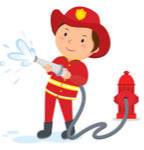Consumer Product Safety Commission

The Consumer Product Safety Commission (CPSC) is warning people to stop buying products if they’re made with “organohalogen flame retardants” because they contribute to health problems. These chemicals have a disproportionately negative health effect on vulnerable populations, including children.
Here are our tips for avoiding flame retardants:
- Furniture: Look for the label. Thanks to a California law, most companies now label whether foam-based products are made with or without added flame retardants. Not on the label? Ask a salesperson.
- Replacing nap mats? Look for flame retardant (FR)-free options, either FR-free foam or cots. Research shows making this change significantly lowers the levels of FRs in child care settings! Here’s some information on child care nap mats from our colleagues at Center for Environmental Health: http://www,ceh.org/wp-content/uploads/Nao-Mat-Fact-Sheet-rev.pdf
- Limit electronics in spaces children inhabit. This is good for many reasons, including developmental concerns about too much screen time. When you do include televisions or computers, seek out companies that make their casings without harmful FRs Our colleagues at Toxic Free Future tested televisions for flame retardants and released their findings last fall: https://toxicfreefuture.org/science/research/flame-retardants-tvs/
- Children’s products: Foam-based products made for children are not the source of ignition in a fire; there is no fire-safety benefit from adding FR chemicals. However, many foam-based items are not labeled one way or the other. The good news is that manufacturers are increasingly making these products without FRs, now that foam made for furniture doesn’t have to include FRs. Join the Getting Ready for Baby Campaign’s effort to ensure child care retailers screen for FRs and other harmful chemicals. www.gettingready4baby.org/
Source of this information is Bobbi Wilding from Clean and Healthy New York.
